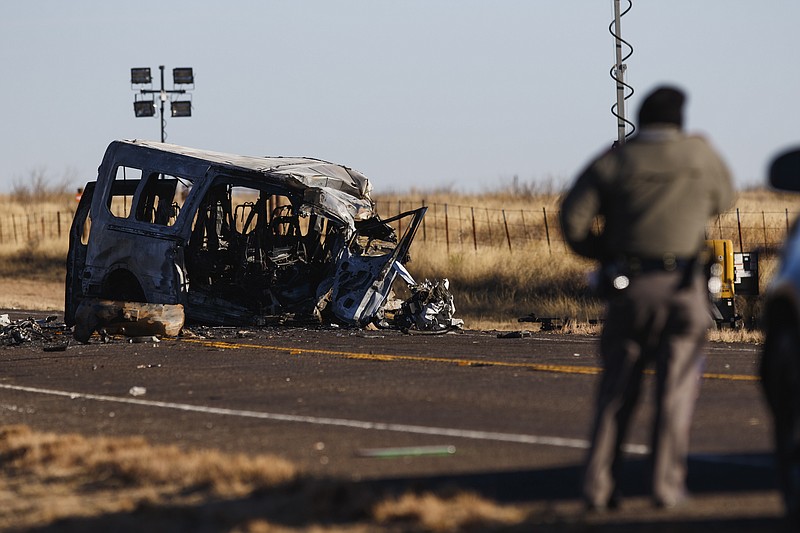It's not your imagination. Drivers are getting worse.
The car that pulled out in front of you. The guy that stayed on your bumper - inches from your bumper. The woman looking at messages on her phone who nearly sideswiped you. The senior citizen holding up traffic by driving 10 miles under the speed limit. Them.
While you've managed (somehow) to avoid an accident, too many have not.
So it won't surprise all of you who pride yourselves on driving carefully that traffic fatalities on Tennessee roads in 2021 rose 16% over those in 2019, before the initial coronavirus pandemic held down driving in 2020, according to a report released earlier this week, "Addressing America's Traffic Safety Crisis: Examining the Causes of Increasing U.S. Traffic Fatalities and Identifying Solutions to Improve Road User Safety," by TRIP, a national transportation research nonprofit. But even in 2020, fatalities in the state were more than 7% above 2019.
This statement in the report caught our eye: "The significant increase in traffic fatalities since the onset of the pandemic appears largely related to increased risks being taken by drivers."
It cited an October 2021 National Highway Traffic Safety Administration report that found "after the declaration of the public health emergency in March 2020, driving patterns and behaviors in the United States changed significantly. Of the drivers who remained on the roads, some engaged in riskier behavior, including speeding, failure to wear seat belts, and driving under the influence of alcohol or drugs."
Hamilton County, where most of us have had their close calls with these risky drivers, somehow has managed to fight below its weight, as far as fatalities from 2017 to 2021 are concerned. We hope that doesn't mean our time is coming.
While the county is fourth in the state in number of licensed drivers, in overall crashes, in speeding crashes, in young driver crashes and in senior driver crashes, and fifth in injury crashes over the period, it was only 87th (out of 95 counties) in fatal crashes. It also was 40th for alcohol-impaired crashes and 66th in alcohol-impaired fatality crashes.
Older drivers may recall that 50 years ago most daily newspapers routinely published photographs of deadly car crashes, and several a week might have been seen in either of Chattanooga's then-two daily newspapers.
In fact, 1972 (50 years ago) and 1973 were the two deadliest years on U.S. highways with more than 54,000 deaths each.
However, like violent crime and abortions performed across the country, the number of deadly crashes from around 1990 through around 2015 plummeted. Indeed, for a seven-year period between 2009 and 2015, fatal car crashes in Tennessee fell below 1,000 in five of those years. According to the National Highway Traffic Safety Administration, the number of fatal car crashes between 1994 and 2019 fell 7% in the state, and most states saw bigger drops than Tennessee.
But in 2021, the number in the Volunteer State was back up to 1,318.
The TRIP report indicates bicycle and pedestrian fatalities across the country also increased over the 2019-2021 period - pedestrians by 18% and bicyclists by 16%. The increases for Tennessee were not delineated in the report.
However, the report does include a safety strategy for combating the increase in deaths from the U.S. Department of Transportation (DOT). It includes safer roads, safer vehicles, safer speeds, post-crash care and safer people.
"Increasing investment in roadway safety improvement," the federal Democratic administration agency concludes, "is likely to pay off in the form of reduced fatal and serious traffic crashes."
"Making a commitment to eliminating fatal and serious injuries on the nation's roadways will require robust investment ...," Dave Kearby, TRIP's executive director, writes.
We think the key lies not necessarily in the "investment" (read: more taxpayer dollars) Democratic administrations always want more of, but in "safer people," one of the tenets in DOT's strategy.
In the decade of the 2010s, the U.S. fell below 33,000 motor vehicle deaths four times, but, more significantly, for the first time since 1949, when there were far fewer people in the country and far fewer cars on the road.
Unfortunately, the anger that permeates our political discussions, on the left and on the right; the anger that is fomented when police kill innocents and when police are killed; the anger that issues when we point fingers during a global pandemic instead of pulling together for solutions; and the anger that explodes when pro-life supporters bomb abortion clinics or when pro-choice advocates torch pregnancy health centers, has hit our roads.
So, we don't look where we're going, we drive too fast, we get too close, we have to swerve to get ahead of you. In the worst of cases, we pull out our guns.
Thus, not when we spend more, but when we cool that anger, when we learn to speak to each other and find reasonable solutions to big issues, will our traffic fatalities decrease once again.
